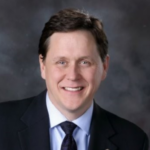An aging and declining population throughout rural America is creating a double whammy for those tasked with providing health care. A recent study found that of the 1,810 rural hospitals operating in the United States, 50 percent were operating at a loss and 410 risk closure. As workforce shortages continue to worsen this trend, states are responding in creative ways.
In 2014, Missouri began the process of utilizing medical school graduates who were shut out of the residency training system by allowing them to work and train with licensed Missouri doctors. Now, states like Oklahoma are moving ahead cautiously, with slimmed-down versions of the original Missouri bill.
While many states simply add more money to a failing paradigm, these states are focusing on changing the delivery of care, beginning with challenging assumptions about the workforce. Some proposals push “mid-level” providers such as nurses and physician assistants to extend (by legislation or payment incentives) the upper limits of their license to provide care previously performed by licensed physicians. But Missouri and Oklahoma are trying to add doctors, too.
States should allow some medical school graduates who have not been accepted in a residency training program to be provisionally licensed to work and learn under the supervision of approved physician-led teams. This would save time and money in training as well as improving access to a limited number of providers.
As states turn to unmatched medical school graduates to help ease the doctor shortage, they struggle with balancing the desire to put these people to work as quickly as possible, while simultaneously protecting the public from the unintended consequences of a two-tier provider system. As they do so, states are looking to Missouri, which has nearly a decade of experience with these new “assistant physicians.”
Before Missouri passed this legislation, all medical students who did not match with a residency program were in a state of limbo. Thousands of medical school graduates who failed to match with a program were essentially out of luck for at least a year. This means that their skills were largely unused and the public’s investment in their training was delayed. Depending on the specialty, it costs $1.1 million to $1.8 million to train a physician. Medical training is also tremendously expensive for academic hospitals and the taxpayers who fund them. So, apart from the toll it takes on the physician, it is very costly to all of us.
In 2023, 40,375 medical residency slots were filled in a national program that matches slots and applicants via a ranking system. Administered by the National Resident Matching Program (NRMP), the group reports: “the 2023 Main Residency Match had an overall position fill rate of 99.1%, which is incredibly successful and consistent with prior years.”
But the real number is much lower, as those who withdrew, delayed, or did not rank multiple programs were uncounted in this figure. NMRP data show that of International Medical Graduates (IMG), in 2023, 2,590 U.S. IMG, and 5,118 non-U.S. IMG graduates did not match. This lower rate for International Medical Graduates (both U.S. citizens and noncitizens) has historically lagged behind non-IMG graduates.
Missouri’s bill was pioneering in many ways. Missouri responded to the physician shortage by introducing the first substantial bill to utilize unmatched medical school graduates. Key provisions include:
- Assistant physicians are sponsored by physicians who have an unrestricted license through a collaborative practice agreement. The supervising physician must monitor and directly supervise the assistant physician before remote supervision is allowed.
- A supervising physician is limited to three assistant physicians to supervise.
- Eligibility is open to both U.S. and non-U.S. medical school graduates, as well as U.S. and non-U.S. medical training programs.
- Assistant physicians are limited to underserved populations and geographic areas.
- Scope of practice is restricted in the bill in terms of allowed procedures.
- No limitation on total allowable time of the assistant physician may be provisionally licensed.
- Missouri has 348 active licenses for assistant physicians.
Arkansas, Arizona, Missouri, Kansas, Utah, and Washington state have subsequently passed similar legislation, allowing unmatched medical school graduates to care for patients under a provisional status. Now, more states are proposing bills to expand the availability of doctors by allowing provisional licensure of unmatched medical school graduates. States would be wise not to waste this potential precious resource. Maryland, Alabama, Minnesota, and Oklahoma have proposed similar legislation for 2024.
The Oklahoma bill would take a more modest approach. Oklahoma State Sen. Jessica Garvin’s (R-District 43) SB1613 would scale back on the Missouri bill in a few important ways. First, the bill would limit the pool of graduates to “a graduate of an Oklahoma school or college of osteopathic medicine who: is a resident and citizen of the United States or a legal resident alien.” Also, the program would be strictly limited to graduates “in no event more than three years after graduation.”
This necessarily means that the pool of applicants would be strictly limited to Oklahoma graduates.
Missouri Gov. Mike Parson signed legislation in July 2023 aimed at improving the original unmatched resident bill by limiting the non-U.S. schools that would apply and tightening the rules governing their provisional license relationship with sponsoring collaborating physicians. The bill also limits the total term of the assistant physician license to three years.
A recent criminal fraud conviction of former Missouri legislator and Assistant Physician Tricia Derges, who received her degree from the Caribbean Medical University in the Netherland Antilles, was not the genesis of the change. However, her alma mater, and other institutions not recognized by legislatively designated medical societies will be excluded.
States should learn from the experience of Missouri and other early adopters. Simple provisions to improve the legislation include:
- Elimination of fly-by-night, offshore medical programs.
- Limitation on the total time of provisional license.
- Improvements in payment conformity to allow Medicare payments.
The physician shortage in the United States will continue to worsen, particularly in rural areas. In small towns across the country, the health care system is fragmented. Hospitals are closing, small town Main Streets are losing their pharmacies, and access to care is limited as senior citizens require more care and help getting it. By 2030, it is estimated that the physician shortage in the United States could range from 41,00 to 121,000 doctors.
The availability of trained medical school graduates who desperately want to work coupled with a growing shortage of health care professionals seems to be a natural match. Matching these “unmatched” physicians to available opportunities must begin with a way for them to legally practice. Policy makers should move swiftly but cautiously to meet the challenges of the doctor shortage in underserved areas while maintaining the highest professional standards for excellent care and public safety.
The following documents provide additional information:
Expanding Access to Primary Care by Removing Barriers to Assistant Physicians
https://www.cato.org/events/expanding-access-primary-care-removing-barriers-assistant-physicians
The Cato Institute explores the benefits to access by expanding assistant physician provisional licenses to unmatched residents.
Provisional Licenses Would Address Physician Shortage
https://heartland.org/opinion/report-provisional-licenses-would-address-physician-shortage/
The Heartland Institute provides support for provisionally licensed, nonmatched medical graduates.
Using Unmatched Medical Graduates to Improve Access to Care in Texas
https://www.texaspolicy.com/using-unmatched-medical-graduates-to-improve-access-to-care-in-texas/
Missouri Tried to Fix Its Doctor Shortage. Now the Fix May Need Fixing
https://kffhealthnews.org/news/article/missouri-doctor-shortage-assistant-physician-license/
Missouri House Bill 2906, 101st General Assembly
https://house.mo.gov/billtracking/bills221/hlrbillspdf/5874H.01I.pdf
Missouri House bill seeks to tighten original ‘Assistant Physician’ licensing bill
The Implications of Missouri’s First-in-the-Nation Assistant Physician Legislation
https://www.ncbi.nlm.nih.gov/pmc/articles/PMC4763385/
Bradley Freedman, MD writes in the National Library of Medicine on the opportunities and challenges of implementing the Missouri Assistant Physician Bill.
Senator Jessica Garvin’s Bill creating Assistant Physician license in Oklahoma
OK Bill to allow provisionally licensed medical school graduates to practice for three years within approved collaborating agreements with unrestricted licensed physicians.
Nothing in this Research & Commentary is intended to influence the passage of legislation, and it does not necessarily represent the views of The Heartland Institute. For further information on this and other topics, visit the The Heartland Institute’s website,
The Heartland Institute can provide expert analysis for your state. Please don’t hesitate to contact us if we can be of assistance! If you have any questions or comments, contact Heartland’s government relations team at [email protected] or 312/377-4000.




